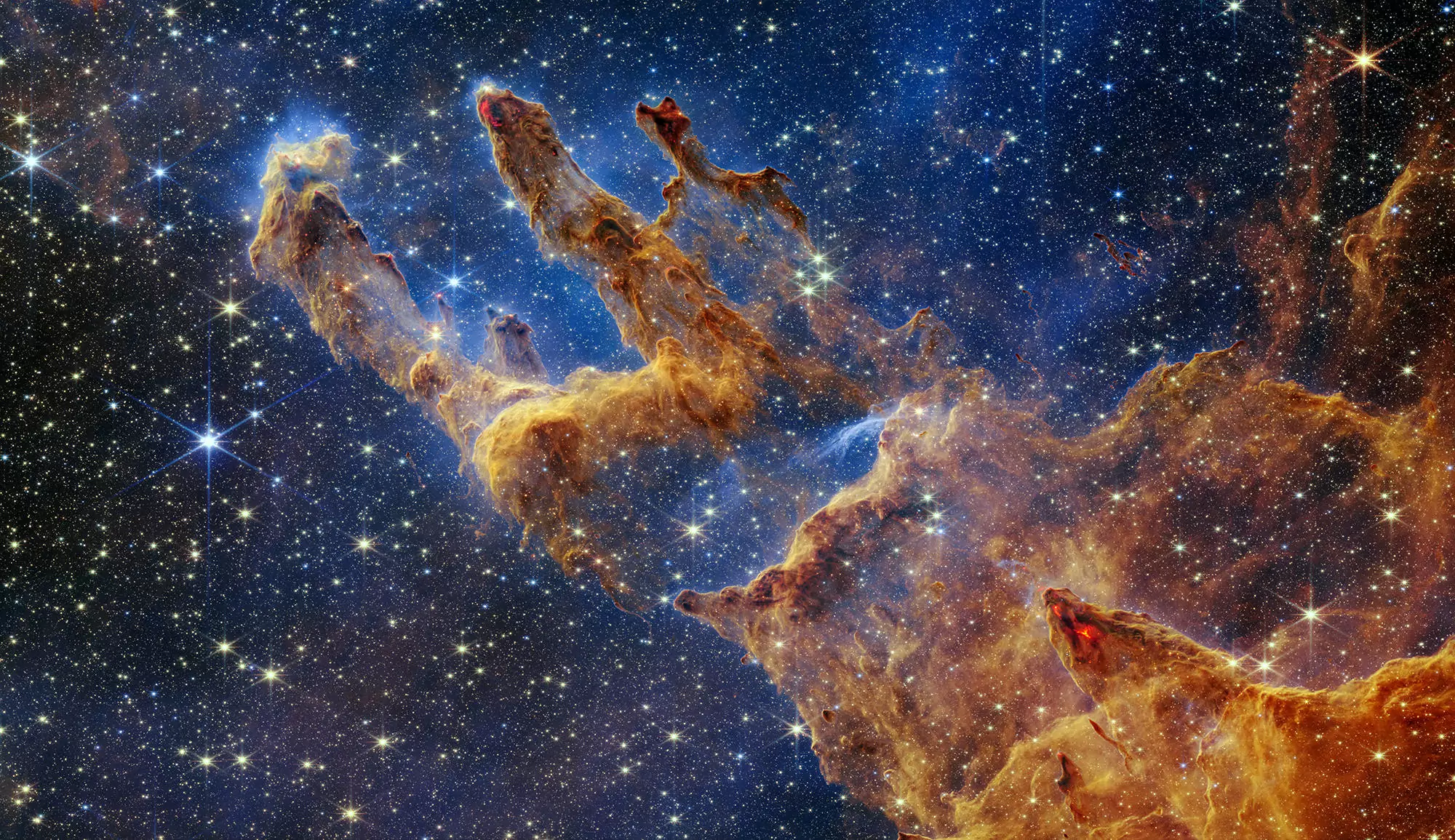Large-scale field of AD Leonis and electrons’ energy
Red dwarfs are stars smaller and cooler than the Sun—and the most common type of star in our Galaxy. They often possess much stronger magnetic fields than the Sun. Earlier this year, the team published in the journal Astronomy & Astrophysics [2] an analysis of fast drifting radio bursts from the red dwarf AD Leo, observed in 2021 with China’s Five-hundred-meter Aperture Spherical Telescope (FAST). These bursts were interpreted as due to mildly energetic electrons moving in the large-scale (dipolar) magnetic field of the star. The energy of the emitting electrons and the location of the radio sources near the star were derived for the first time.
Strong fields around starspots
Stellar magnetic fields are also expected to have a complex small-scale structure. However, our exploration has so far been limited to large-scale structures, as there has been no effective way to directly probe small, localized regions such as starspots. These small-scale fields are especially important because they can trigger stellar eruptive events that create harsh space weather conditions for any orbiting exoplanet and can affect their habitability.
Fine radio features
The team observed again in 2022 the red dwarf AD Leo using FAST. Thanks to the telescope’s exceptional sensitivity, they identified even finer details in the radio emission, lasting only a few milliseconds. Remarkably, these millisecond-scale bursts drifted in frequency—like a rapidly sliding musical note—at an extraordinary rate of about 8 GigaHertz per second [1].
“The sweep rate is so fast that it cannot be explained by electrons – whatever their energy – moving in large-scale, e.g. dipolar, magnetic arches of the star. Instead, we demonstrated that electron motion along a small magnetic arch can explained the observations” said Philippe Zarka, a co-author from Observatoire de Paris - PSL.
The team believes the frequency sweeps are produced when electrons bounce back and forth between the two ends of a magnetic arch anchored on starspots—regions of intense magnetic activity that can drive powerful stellar flares. While similar arches are routinely imaged on the Sun, the vast distances to other stars make them impossible to observe directly.
“We previously had hints of vigorous energy release in these magnetic arches from X-ray observations of red dwarfs,” explained Jiale Zhang, the study’s lead author. “But this new radio-based method gives us a direct way to estimate the size of the arches. The arches are where significant space-weather events originate, and our approach adds a powerful new tool for studying them.”
Looking ahead
The team now plans to apply this technique to other types of stars to determine whether such fast frequency sweeps are common. These observations will help reveal how stellar magnetic arches erupt and shape the space-weather environments around their exoplanets
| Sources [1] Zhang Jiale, Hui Tian, Stefano Belloti, Tianqi Cang, Joseph R. Callingham, Harish K. Vedantham, Bin Chen, Sijie Yu, Philippe Zarka, Corentin K. Louis, Peng Jiang, Hongpeng Lu, Yang Gao, Jinghai Sun, Hengqian Gan, Hui Li, Chun Sun, Zheng Lei, and Menglin Huang, Starspots as the origin of ultrafast drifting radio bursts from an active M dwarf, Science Advances, 11, eadw6116, 2025, https://doi.org/10.1126/sciadv.adw6116 [2] Zarka, Philippe, Corentin K. Louis, Jiale Zhang, Hui Tian, Julien Morin and Yang Gao, Location and energy of electrons producing the radio bursts from AD Leo observed by FAST in December 2021, A&A, 695, A95, 2025. https://doi.org/10.1051/0004-6361/202450950, arXiv.2501.16180 |
